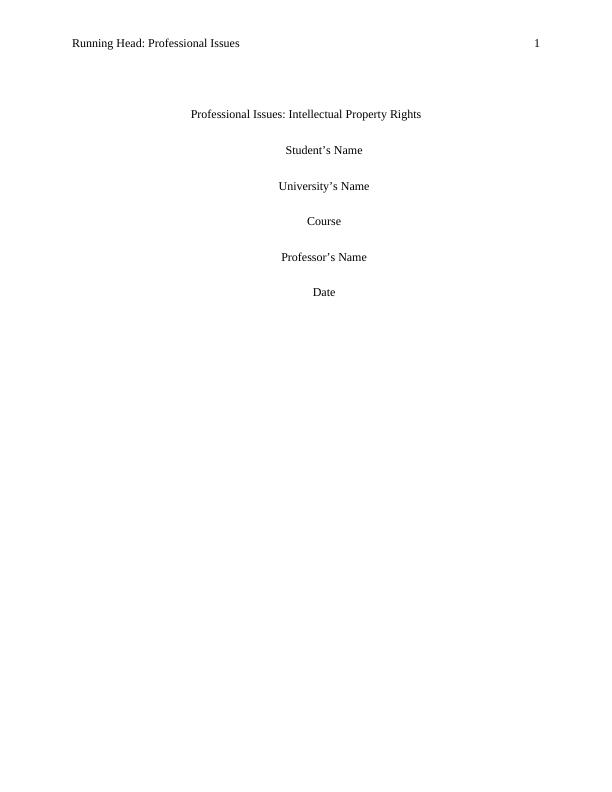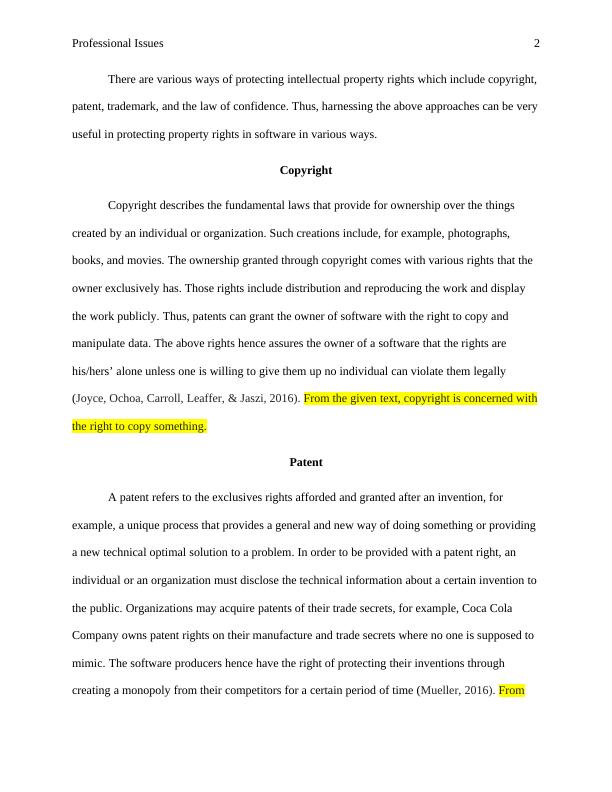Professional Issues: Intellectual Property Rights Report 2022
Explain the purpose and usefulness of different approaches for protecting intellectual property rights in software. Discuss possible ways for a company to show infringement of intellectual property rights in a court case.
6 Pages1285 Words23 Views
Added on 2022-09-27
Professional Issues: Intellectual Property Rights Report 2022
Explain the purpose and usefulness of different approaches for protecting intellectual property rights in software. Discuss possible ways for a company to show infringement of intellectual property rights in a court case.
Added on 2022-09-27
ShareRelated Documents
End of preview
Want to access all the pages? Upload your documents or become a member.
Intellectual Property Rights in Software Industry
|6
|1502
|384
Understanding Intellectual Property Protection for Artistic Work
|5
|847
|352
Intellectual Property: Protection, Plagiarism, Open Source Code, and Cybersquatting
|5
|999
|246
INTELLECTUAL PROPERTY LAW
|8
|2879
|205
Introduction to Intellectual Property Law
|9
|2286
|41
DRAFT/PRE-RELEASE/CONFIDENTIAL.
|100
|40807
|9



